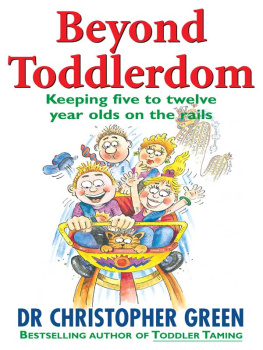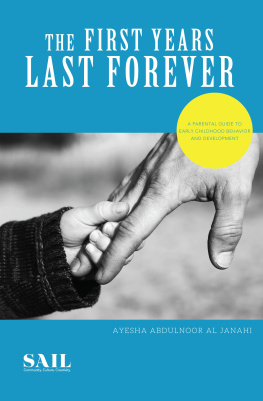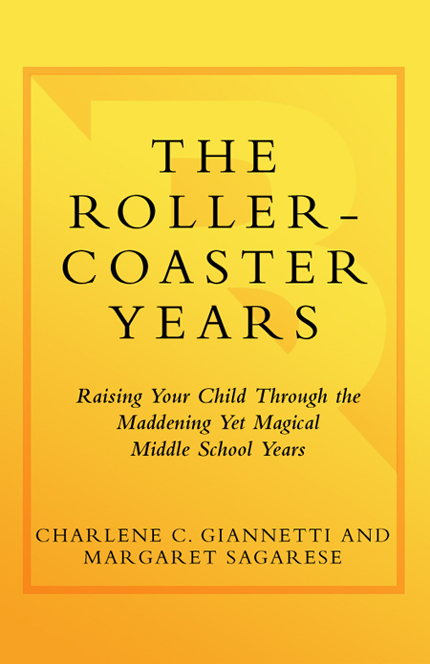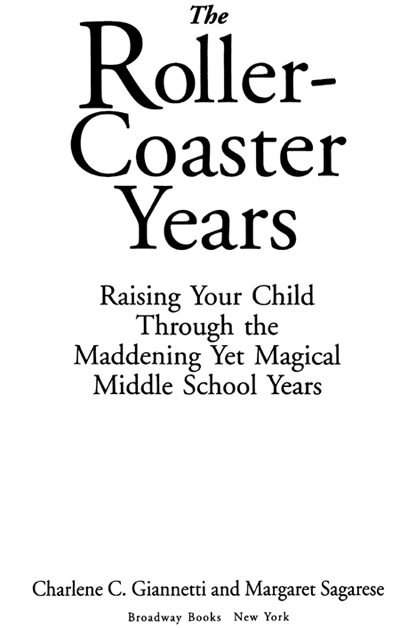Acknowledgments
The idea for this book was not hatched overnight. It took yearsten to be exact. The two of us had worked together on a business newsletter and were eager to coauthor a book. Nothing surfaced that was compelling enough to sustain our interest. When our talks focused more on what was happening in the lives of our middle schoolers rather than in the world of business, we knew we had found the topic for our book. We both believe that writers write best when they are passionate about their subject matter. And what topic was more near and dear to our hearts than our children and helping them survive and thrive during these important years?
Our initial investigation into the subject matter led us to the National Middle School Association, a fortuitous discovery. NMSA, with its breadth and depth of knowledge and experience, proved to be instrumental during the research phase of our book. Our heartfelt thanks to John Lounsbury, head of NMSAs publications division, whose enthusiasm for our project never wavered. Despite his demanding schedule, he always found time to talk with us. He provided invaluable assistance with our survey by supplying us with the names of principals in middle schools in each of the fifty states and six Canadian provinces. He guided us to numerous experts and resources inside NMSAs vast educational network. His encouragement and wisdom were most welcomed.
Ross Burkhardt, who was NMSAs president during the time we worked on the book, was generous with his time, knowledge, and resources, as he helped to sketch for us an accurate portrait of the middle school student he knows so well. We could easily see why Ross is so popular with his students at the A. G. Prodell Middle School in Shoreham, New York. His classroom, with its groupings of stuffed chairs and pillows, was warm and welcoming. The assignments that Ross fashions for his childrenhaving them do video recaps of the 1960s, for examplewere another example of his creativity and involvement as a teacher. His students are lucky to have him, and we were lucky to share him for a time.
In addition to its numerous publications, NMSA hosts many conferences each year. As we began the research for our book, we attended one held by the New England League of Middle Schools in Providence, Rhode Island. NELMSs Executive Director Robert C. Spear was most gracious in providing us with access to the many talks and exhibits at this exposition. We thank him and his staff.
Our gratitude to all the parents, teachers, and students who took the time to complete and return our lengthy questionnaire. The response was overwhelming, not only in terms of those surveys that were returned, but also because of how much was written on many of the forms. So many times, it was apparent that our questions had touched a nerve. We could almost hear the anguish in these voices. Teachers expressed their frustration trying to teach young people who are distracted in class because their home lives are in disarray. Parents lamented the electronic medias hold over their childrens lives and worried about the future. And the students themselves came across as the walking paradoxes that we know to be the middle schooler. The same child could fill out a questionnaire and seem childlike and innocent on one page and streetwise and cynical on the next. We are grateful to all of them for taking the time to express their feelings to us.
We are indebted to the many other experts who gave so willingly of their time and knowledge. The list is too lengthy to detail here, but you will see their names sprinkled throughout the book.
Our agent, Denise Marcil, was steadfast in her support of our project. We would also like to thank her assistant, Jeff Rutherford, for all of his help.
We were most fortunate to have as our editor Janet Goldstein, every authors dream. From the beginning, Janet believed in us and our idea. Her instincts, both as an editor and as a parent, helped us to home in on many of the issues discussed in this book. Our gratitude to Betsy Thorpe, Janets assistant, for her meticulous attention to all the details throughout the books progress.
To all our relatives, friends, and fellow parents, for your love, patience, insight, and help while we labored these many months. We could not have done it without you.
Most of all, to our children, Charlenes Joseph and Theresa, and Margarets Skyler Rose, without whom this book could not have been written.
Introduction
Getting a
View from the
Ferris Wheel
The biggest challenge in dealing with this age group
is their roller-coaster emotions.
(Middle school teacher from Washington)
Shes driving me crazy! the mother of a thirteen-year-old girl confessed to a friend over the phone. Her math teacher called to tell me she hasnt handed in any homework for three days. You should see her room! I expect the board of health will soon condemn it. And the way she dresses! The other day she sprayed blue streaks in her hair and painted her fingernails to match.
She sighed. But you know, she can be such fun! The other night she challenged me to a game of cards, Go Fish, like we used to play when she was younger. We played for almost two hours and talked about everythingschool, music, her French club, several books shes read, our last summer vacation. And I was reminded what a great kid she issmart, funny, warm, caring.
Of course, it was just a lull in the storm, she said, sadness in her voice. By the next morning, we were at each others throats again. I just cant wait until these years are over!
Parenting a child from ages ten through fifteen is truly challenging. Like the view from a Ferris Wheel, the highs are exhilarating; but looking down can be flip-flop stomach scary. It is the best of times and the worst of times.
How can this be? parents ask themselves and each other. How could a child, who yesterday was so happy, cooperative, and sharing have metamorphosed into such a moody, angry, and selfish individual? Parents lose patience and heart, particularly when they are on the receiving end of so much hostility:







